|
9/18/2014 Christ Jesus' methodology in healing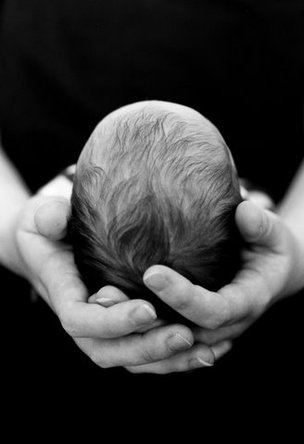 Where do we come from? Where are we going? And whose fault is it when we have problems? These questions confront us all at one point or another. Parents caring for a sick child might ask, "What did I do or not do to cause this?" A child struggling with performing a simple task that his friends might easily do could be asking, "Will I ever be like the other kids?" Tough questions like these naturally pull on the heartstrings. But finding answers may involve more than focusing on the problems in front of us. Jesus disciples once asked him about a case of physical disability - whose fault was it? Did the man do something wrong? Did his parents, that he was “born this way? Their prayers hadn’t been able to heal the man. We don’t know but maybe frustration and fear for the man’s future had set in. Jesus replied that neither were at fault. He turned them away from even considering fault and cause for the disability – away from the disability itself. He declared that the works of God, that is of divine Good, was all that was manifest in him. He shifted the focus from material disability to God’s divine ability to bring out perfection and goodness alone. Now the difference between the disciples approach and Jesus’ was as different as night and day. But Jesus’ viewpoint led to healing, while the disciples approach would have left the man mired in the problem.  The Christ perspective – the divine message of man’s spiritual origin and native goodness – heals. It doesn't teach to cope with or explain away problems. It completely heals them. I think that is what set Christ Jesus apart from the doctors and helpers of the sick before him. Through his method of turning to God, identifying God’s law of Good in each case, and overruling whatever the current material belief about disease was claiming, he never doubted his cases would be healed. He appealed to God’s law the way a mathematician appeals to math facts. He worked with solutions, not on problems. If you would like to learn more about Christ Jesus' methodology, check out these links:
Not a subscriber and want to be?
Easy. Just sign up in the sidebar. You may also wish to: VISIT MY WEBSITE HOME PAGE FIND LINKS TO MY OTHER PUBLISHED CONTENT LISTEN TO A COLLECTION OF MY "YOUR DAILY LIFT" 2-MINUTE PODCASTS 7/12/2014 The patient's role in healing A colleague shared something her Christian Science teacher once said: “You can’t have ‘Heal me, but don’t change me.'” Science and Health with Key to the Scriptures explains, "The effect of this Science is to stir the human mind to a change of base, on which it may yield to the harmony of the divine Mind." (Mary Baker Eddy, 162) As a patient gives consent to what God as the divine Mind is doing for him, things change. While a patient may tend to watch the body, or what he perceives to be his problem, for signs of improvement, this isn’t the only place where change is happening. Working together through prayer, practitioner and patient become witnesses together of the power of the Christ to produce/reveal harmony in human minds and bodies. In Christian Science treatment, change is a normal response and should be expected. But sometimes in the process of change things may look and feel a bit messy. Christian Science uses the term "chemicalisation" to describe "the process which mortal mind and body undergo in the change of belief from a material to a spiritual basis." (Science and Health, 169) Have you ever set about cleaning a cupboard by dumping out all of the contents on the counter? Were you to stop too soon and judge your progress by the mess, you might lose the vision of what you are trying to accomplish, get discouraged, and shove all the junk back in the cupboard to be dealt with later, or maybe not at all. Let’s say you told a friend about your cleaning project and enlisted her help. She may not be able to decide for you what to keep and what to throw out as useless, outdated, irrelevant or just WRONG, but she could help you keep your vision clear, encourage you to keep going and not be distracted by the short term mess. She might ask you to think about whether the things you are hanging onto are useful, beneficial and a blessing. She might remind you that it was courageous to start the project and that the same courage that got you started to clean up the messy cupboard would support you as you sorted things out. So now, let's say the case isn’t a cupboard, but is a physical problem generating some fear. And the friend you call is a practitioner that you invite to help you through her prayers. The practitioner would pray to witness to your spiritual perfection – that you are, in Jesus’ words, “perfect as the Father is perfect” as the image and likeness of God. Through her silent or audible mental treatment she would not and should not make human decisions for you relating to your care, but she would systematically cast out useless, outdated, irrelevant and just plain wrong fears that pull you down into disease. From the mount of spiritual vision she would see you out of the mess. She might even tell you what she sees about you, reminding you silently and sometimes audibly that you can see it, too. Christian Science healers are engaged to give Christian encouragement, to express patience and remove fear, and to inspire and help their patients with “legitimate Christian Science, aflame with divine Love.” (Science and Health, 367)  You, as the patient, would have a role to play, too – that is, to consent to the treatment and to the change of base that it produces. This doesn’t just happen at the point of asking for prayer. Sometimes, as patients, we need to give consent DURING treatment to what a practitioner is seeing, saying and knowing about our case. Just as we may invite a friend into our house, we may invite a practitioner into our mental house to help us sort things out, but it is still OUR house. Decisions are made there that are ours – alone with God – to make. I called a practitioner for help one day because I was sinking under a problem. I just wanted out. She asked me a question and gave me a little homework, something to think about while she prayed for me. I got off the phone and blew up. Was she kidding me? I was already sinking and now I had to do THIS on top? Fuming and ruminating, I didn’t do it at first. Then a thought interrupted the fuss, suggesting that were I to look at my case the way the practitioner did, I might not feel so lousy and burdened. So I did the little homework she had given me, and in so doing I changed the base of my thinking from the problem to the spiritual solution at hand. I was quickly healed.. In short: The practitioner prayed. She gave me something to consider and do for myself. I consented to change my base of thinking as I did the little homework. And I was healed. There is a passage in Yvonne Fettweiss's and Robert Warnack's book Mary Baker Eddy: Christian Healer that is oft-quoted as though it is the final word for all things relating to the responsibility of practitioners and patients in treatment. “When a student doesn’t heal, it’s his own fault. I am out of patience at hearing a student ask his patient to work when the patient is up to his ears in the waves. Don’t ask anything of your patient. Show him your Science and when he is healed he will work.” (Said to pupils during an 1889 class, page 151)  These comments are sometimes cited to prove that a patient has nothing and a practitioner has all to do in the work of healing. But as Jesus’ own example shows us, that isn’t necessarily true. Of his recorded healings we see that sometimes he made demands on his patients and sometimes he didn't. Sometimes he spoke to them at length and sometimes he didn't. Sometimes he expected things of them before, sometimes after, and often not at all. In other words, his approach adapted according to the needs of the case. So did Mary Baker Eddy’s. She wrote letters and made statements, such as that oft-quoted one, to individual practitioners and certain groups of pupils, speaking to their specific need and the needs of their cases. Would these comments apply to some others, also? Of course, they would. But at other times she addressed similar situations in different ways. This is why having access to her many counsels is so good for us. We have lots of good guidance to help us find our way in healing. Here are some other examples showing how she herself dealt with the sick: “Take the First Commandment for your medicine-it cures all disease.” (Written to Septimus Hanna in 1897, L05195) “Now rouse yourself to know that you are not living in the body but in God, in Spirit, in the good you do and are; Then you get out of the belief of health into the understanding of health, and are out – and out through Science, not suffering. Keep your thoughts away from me and grounded on divine Principle, not on a person.” (A letter to John Lathrop in 1903, L04262)  The chapter titled, "Interlude: Advice for Healers" in Mary Baker Eddy: Christian Healer has loads of comments on the healing practice. They illustrate a variety of approaches to working with patients - sometimes engaging them, and sometimes not, in the work. We need to exercise wisdom and discernment to know which insights relate most directly to our present cases. When it comes to private correspondence and conversations, however inspired they may have been to meet the demand of the hour, what applies to one does not necessarily apply to all. What is written in Science and Health with Key to the Scriptures, however, does apply to all of us. Mrs. Eddy wrote the Christian Science textbook as a scribe under orders from God. Science and Health underwent assiduous scrutiny, refinement of vocabulary and perfecting of content, - to a much higher degree than any other of her writings. She asked practitioners to place Science and Health in the hands of all their patients. Patients, therefore, shouldn't be surprised if a practitioner encourages them to open it and see what it says to them. A Christian Scientist requires my work Science and Health for his textbook, and so do all his students and patients. SCIENCE AND HEALTH, 456 The wise Christian Scientist will commend students and patients to the teachings of this book, and the healing efficacy thereof, rather than try to centre their interest on himself. RETROSPECTION AND INTROSPECTION, 83 For the word of God is quick, and powerful, and sharper than any two-edged sword, piercing even to the dividing asunder of soul and spirit, and of the joints and marrow, and is a discerner of the thoughts and intents of the heart. HEBREWS 4:12 Not a subscriber and want to be?
It's easy! Just sign up in the sidebar. You may also wish to: VISIT MY WEBSITE HOME PAGE FIND LINKS TO MY OTHER PUBLISHED CONTENT LISTEN TO A COLLECTION OF MY "YOUR DAILY LIFT" 2-MINUTE PODCASTS 7/30/2012 The simple theology that heals Christian Science has this beautiful, clear, pure, spiritual simplicity to it. The entire theology can be boiled down to a few basic points: 1) God exists. 2) God is good. 3) God is all. 4) The universe, including man, is the reflection of God. 5) There is no evil. Mary Baker Eddy, the Discoverer of Christian Science, explained that her work consisted of 2 parts: 1) Discovery of this Science – of these five basic points 2) Proof by present demonstration that this is the Principle by which Jesus healed. We can’t have the discovery without the proof. Mrs. Eddy discovered the action of the divine Mind on human minds and bodies. But limited mortal thought patterns have worn a groove in collective human consciousness, probing, diagnosing and picking apart matter as both cause and effect. Hence we are drawn into thinking that problems are material and thus complicated or difficult to heal. For Christ Jesus, theology and medicine were one. Jesus’ theology is simple and clear. God is all, Good. Evil is nothing, unreal. What we face in every case is a challenge to the simple theology of the Christ. Can we depend on the fact that God is good? Can we prove it? Is man really reflection – the image and likeness of God? Can we demonstrate it? 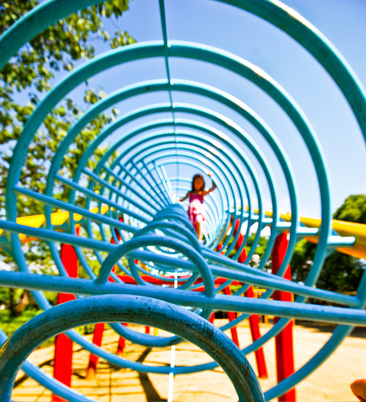 Every case touches on a theological question. The task of a Christian healer is to simply answer the question and watch the proof appear. The work should always be this simple. But it isn’t without opposition. That which Mrs Eddy named mortal mind – limited, matter-based reasoning that generates doubt and fear - would make the task of healing seem complicated, unclear and difficult. Fear and doubt impel us to overwork, or underwork the healing activity of prayer, to doubt our experience with the Christ, to change methods repeatedly and ultimately let the problem run the case. I received a phone call from a father whose child had jumped from a tree house and injured his calf. It appeared to be broken. I was asked to pray for him while the family sorted out the practical care. When I hung up the phone I immediately thought, Well, God, what do you have to say about this? I had Science and Health with Key to the Scriptures open on my desk. My eyes fell on a statement of Jesus found on page 45, “Spirit hath not flesh and bones, as ye see me have.” Looking up from the book, I thought, Don’t be fooled by the picture of flesh and bones. That is not who this child really is. His substance is Spirit. All that he is and has comes from the Spirit that is God. It seemed such a simple response to the theological question, Is this boy the image and likeness of God? 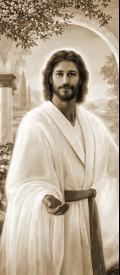 As I considered the implications in prayer – that he was in fact spiritual and that anything pro or con going on with flesh and bones didn’t touch him – a doubt cropped up. I wanted to be sure I was getting the message correctly. I wondered, But wasn’t Jesus just talking about himself? Then I turned the page and read, “The divine Spirit, which identified Jesus thus centuries ago, has spoken through the inspired Word and will speak through it in every age and clime. It is revealed to the receptive heart, and is again seen casting out evil and healing the sick.” (46) OK, I thought, so Spirit knows this child the same way it knew Jesus - as perfect, spiritual, whole, unbroken, invulnerable, unfallen. The same Spirit voicing truth through Jesus' words to his disciples was communicating to me in the inspired Word of Science and Health in this age. My receptive heart was accepting the message. Then up popped a fear. Can it be this easy? What about the broken bone? Don’t I have to do something about this in my prayer? I looked down once again at the book and read the next phrase as though it was being spoken with force, “The Master said plainly that physique was not Spirit…” I remembered Jesus’ instruction in the Sermon on the Mount and thought of it in relation to prayer, “Let your statement be, 'Yes, yes ' or 'No, no'; anything beyond these is of evil." Matthew 5:37 I needed to say Yes, Yes to the plain and simple reality of unbroken, uninterrupted spiritual being. And I needed to say a direct and clear No, No to the physical belief that the child was material and breakable.  That was it. I consented and said YES, YES. In fact, I was so taken by what I was saying YES to, that I forgot the case entirely and continued reading. The phone rang about 30 minutes later. It was the mother. She told me that two minutes after they placed the call, she was holding her son and praying to know what to do next. They had discussed calling an ambulance or driving him to the hospital. Then they heard a distinct sound coming from his leg “like the sound of a zipper.” And he was healed just like that. The pure simple theology of the Christ is revealed. And it heals. Love it? Please share it for others to enjoy.
Let's work together to share the love. Also, if you aren't yet a subscriber, a full-text version of the blog can be delivered to your email inbox. It's easy to sign up in the sidebar. You may also wish to: VISIT MY WEBSITE HOME PAGE READ MORE BLOG POSTS FIND A LIST OF MY OTHER PUBLISHED CONTENT 6/17/2012 Parable of the prodigal Father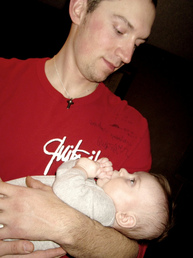 Jesus gave the parable of the prodigal son, as a lesson on the correcting and redeeming power of the divine Father's persistent love for all his children. Who's to say that the younger son in the tale was the only prodigal? Prodigal has two definitions that could apply to the storyline. "Prodigal [ˈprɒdɪgəl] (adj.)1. Rashly or wastefully extravagant; recklessly wasteful, as in disposing of goods or money 2. Giving or given in abundance; lavish or profuse; lavish in giving or yielding." A few weeks ago, I was studying a Bible Lesson that included the parable of the prodigal in the gospel of Luke. We are told that the father welcomed his repentant younger son back into the house and prepared a party to celebrate his return. Seeing the festivities, his eldest son became angry. The father left the party to seek out his elder son in the field where he was hiding. He entreated him (that is, he earnestly dealt with him, treating his concerns). The son poured out the resentments that had built up over many years: of watching the younger brother fall short and yet seem to be favored. The father discerned his heart and lavished on him the one thing he needed most: To know that he, too, was greatly loved. He said "Son, thou art ever with me, and all that I have is thine." There would be no divided inheritance. All the father's love was available for each son. 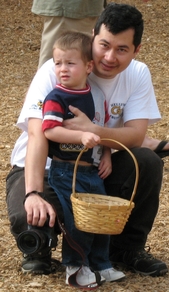 Corresponding passages in the Bible Lesson included this statement from Mary Baker Eddy's Science and Health with Key to the Scriptures, "Evil which obtains in the bodily senses, but which the heart condemns, has no foundation..." (448) This caught my attention because I couldn't see how the elder son had had a change of heart before he received his father's blessing. Had his own heart condemned the evil of anger and envy? Was that a prerequisite to his progress? Apparently, no. It was the father's heart, not the son's, that condemned the envy as having no place. The father showed the son that his suffering was without foundation. The father condemned the lie so his son would not suffer. The younger son may be generally viewed as the prodigal because of the way he squandered his resources. But I think the other sense of prodigal better points to the father, whose lavish, unstinting, unsparing, bounteous love towards each son spoke to their hearts and met their needs. Father's Day lets us pause to honor the prodigious fathers who give unsparingly of their hearts to their kids. But every moment of every day, our heavenly Father is reminding each one of us, "Dear, dear child of mine, you are ever with me. All that I have is thine. I will always love you. Open your heart and you will find that all that I have and all that I am is already there." Happy Father's Day! Find two blog posts that honor good fathers and good fathering: You wouldn't believe how far your appreciation goes when shared.
If you like what you see in this blog, please pass it along to your friends, fans and followers. Every "like", tweet and share touches many, many people. A full-text version of the blog can be delivered to your email inbox. Please subscribe in the sidebar. You may also wish to: VISIT MY WEBSITE HOME PAGE READ MORE BLOG POSTS FIND A LIST OF MY OTHER PUBLISHED CONTENT  One time years ago I was laid up in bed with back pain. I was home alone and really needed to get up. With no one to help me, there was just one thing to do. I rolled out of bed and began to crawl across the bedroom floor. As I did, I thought, This is really dumb. If Jesus were here, he’d heal me. He would say "Get up and walk!" and I would be able to. Sometime before, when I was first learning about spiritual healing, I read in an article, “There is no real healing without the Christ.” I thought, Wow. I need to look into this. So I talked to a friend - a Christian Scientist - about it, and he told me to always think of the Christ as God’s activity. That explanation led me to my next question: What is God’s activity? |

Find me on YouTube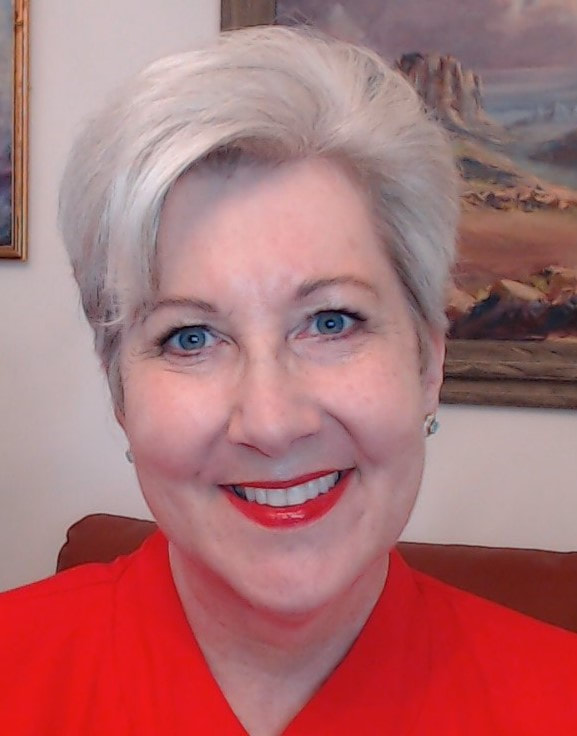
I have practiced Christian Science professionally in some form since 1979. But my journey with Christian Science started in a Sunday school where as a young child I was taught the Scriptures and some simple basics of Jesus' method of scientific Christian healing. A significant experience at the age of twelve opened my eyes to the great potential of this practice. After impaling my foot on a nail, I prayed the way I had learned in Sunday school. Within moments the pain stopped and healing began. By the next morning the wound had disappeared completely. Having experienced the great potential of Christian Science, there would be no turning back. |
INFORMATION |
SERVICES |
HELP |
© 2011-2024 Michelle Boccanfuso Nanouche, CSB. All rights reserved. Pages updated February 6, 2024.

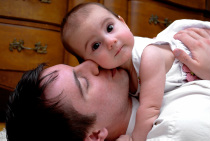
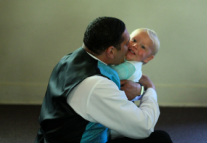
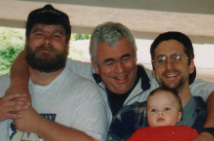
 RSS Feed
RSS Feed
